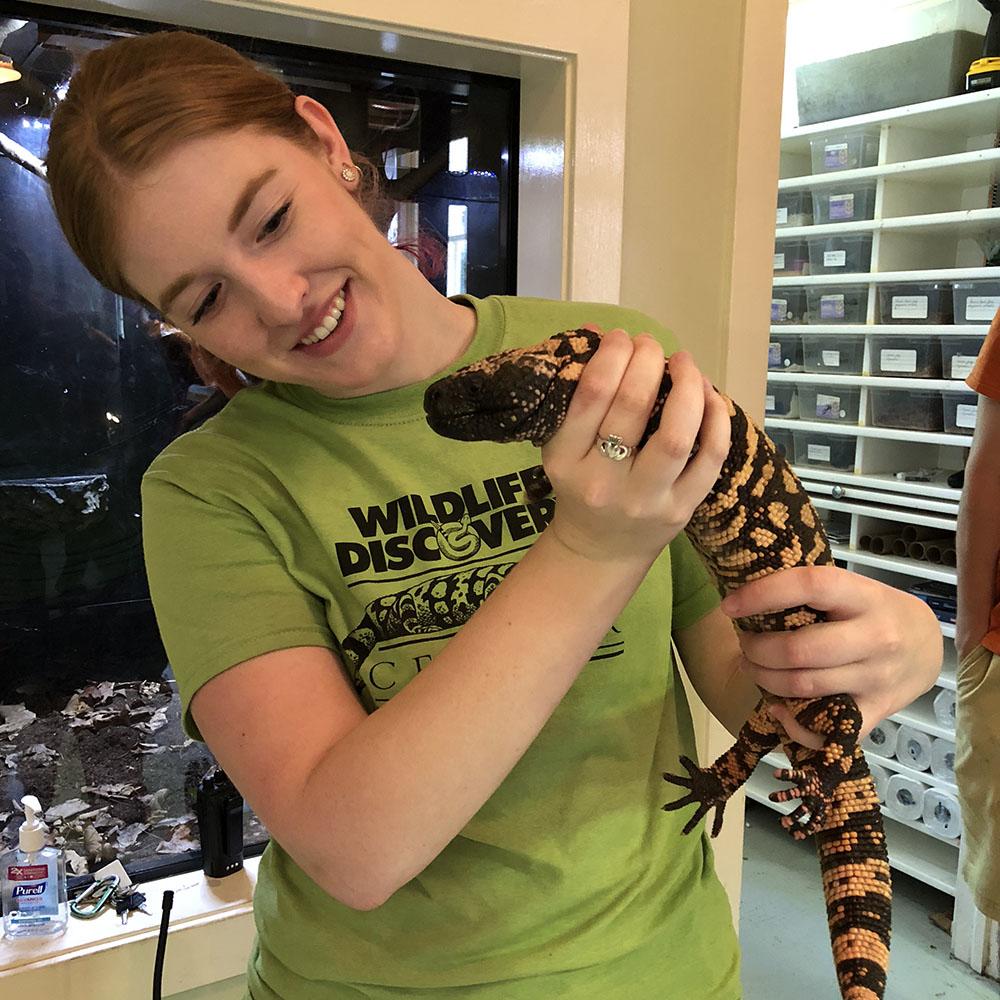
In 2016, Jim Perry, PhD professor in the Fisheries, Wildlife and Conservation Biology Department in the College of Food, Agricultural and Natural Resource Sciences (CFANS) approached The Raptor Center (TRC) about developing a new minor in wildlife care and handling in CFANS. ”There was very high student interest,” he says. “The focus of most wildlife work at the U has been population scale. Some students want individual-scale involvement with wild animals.”
Julia Ponder, DVM, MPH, executive director at TRC and associate professor in the College of Veterinary Medicine, says she, Perry, and Michelle Willette, DVM, MPH, DACVPM, assistant professor and staff veterinarian at TRC, first envisioned a wildlife care and handling minor. Together, they developed the coursework for it.
“But when you start looking at the broad diversity of the animals that are captive, handling or care isn’t always necessarily part of it—the scope of wildlife kept in captivity is incredibly diverse,” Ponder says. “They are kept for education and outreach, research, wildlife rehabilitation, conservation and breeding, and commercial purposes. So, we chose ‘managed captive wildlife’ as the phrase we used for the foundation class.”
The 15-credit minor is delivered both in-classroom and through a field practicum. During the first one and a half academic years, 65 students declared the minor. The core program of the minor includes a managed captive wildlife course, a wildlife care and handling externship, and a choice between a course in principles of conservation biology or principles in wildlife management.
Willette instructs the managed captive wildlife course, which offers students a chance to create a fictional wildlife care facility based on research they have conducted and insights gained from guest speakers who work in the field. She and the staff at TRC are adapting the Raptor Academy as an online course for undergraduate students. Additionally, an introductory course in diseases in free-ranging and captive wildlife premiered this spring semester.
In 2018, eighteen students completed the first offering of the minor’s capstone—a wildlife care and handling summer externship, and 19 more are currently enrolled for 2019. The first year’s students spent their externship at local zoos and rehabilitation centers (such as Como Zoo, the Minnesota Zoo, TRC, and the Wildlife Rehabilitation Center in Roseville, Minn.), at outstate, outof-state, and even out-of-country facilities (e.g., Beijing Raptor Rehabilitation Center). Perry says, “Students feel they have gained skills and perspective and that they will be better, more informed professionals and citizens.”
Some externship students are serving at TRC. “We have a hands on experiential option that includes education and clinical experience here,” Ponder says. “And we are now teaching an introductory course in diseases of free-ranging and captive wildlife.”
But once the participating undergraduates finish, what career options might this minor open up to them?
After 30 years of experience working in captive wildlife veterinary medicine, Willette says that as the field grows, so too do job opportunities. “For example, one of our guest speakers is a falconer whose birds do abatement,” says Willette. “He goes to airports, wineries, farms, and poultry operations, and his falcons keep other birds away. There are a tremendous number of those kinds of professions out there, and the students in this minor will be exposed to a very wide swath of different reasons people have wild animals in captivity.”
The hope, too, is that by preparing enthusiastic undergraduates who have an interest in animals with a wildlife care and handling minor, the U will be setting a new standard for professional opportunities. The students link together both population and individual animal health-promoting skills. “Jobs in this field require an incredible amount of knowledge and skill,” says Ponder. “The minor gives these students a credential that reflects the education and experience they have had in this broad field and introduces our students to the many considerations they need to take when working with animals.”